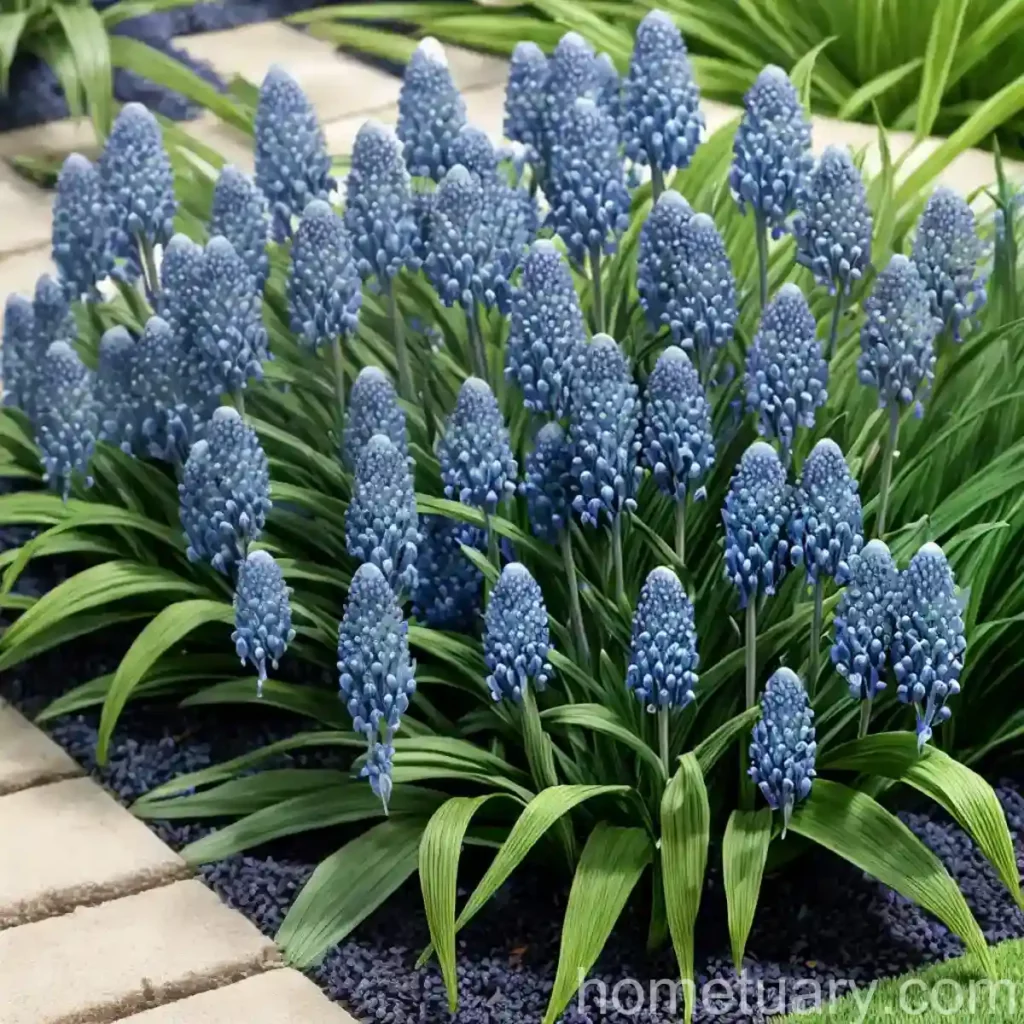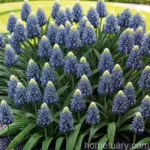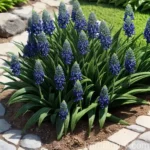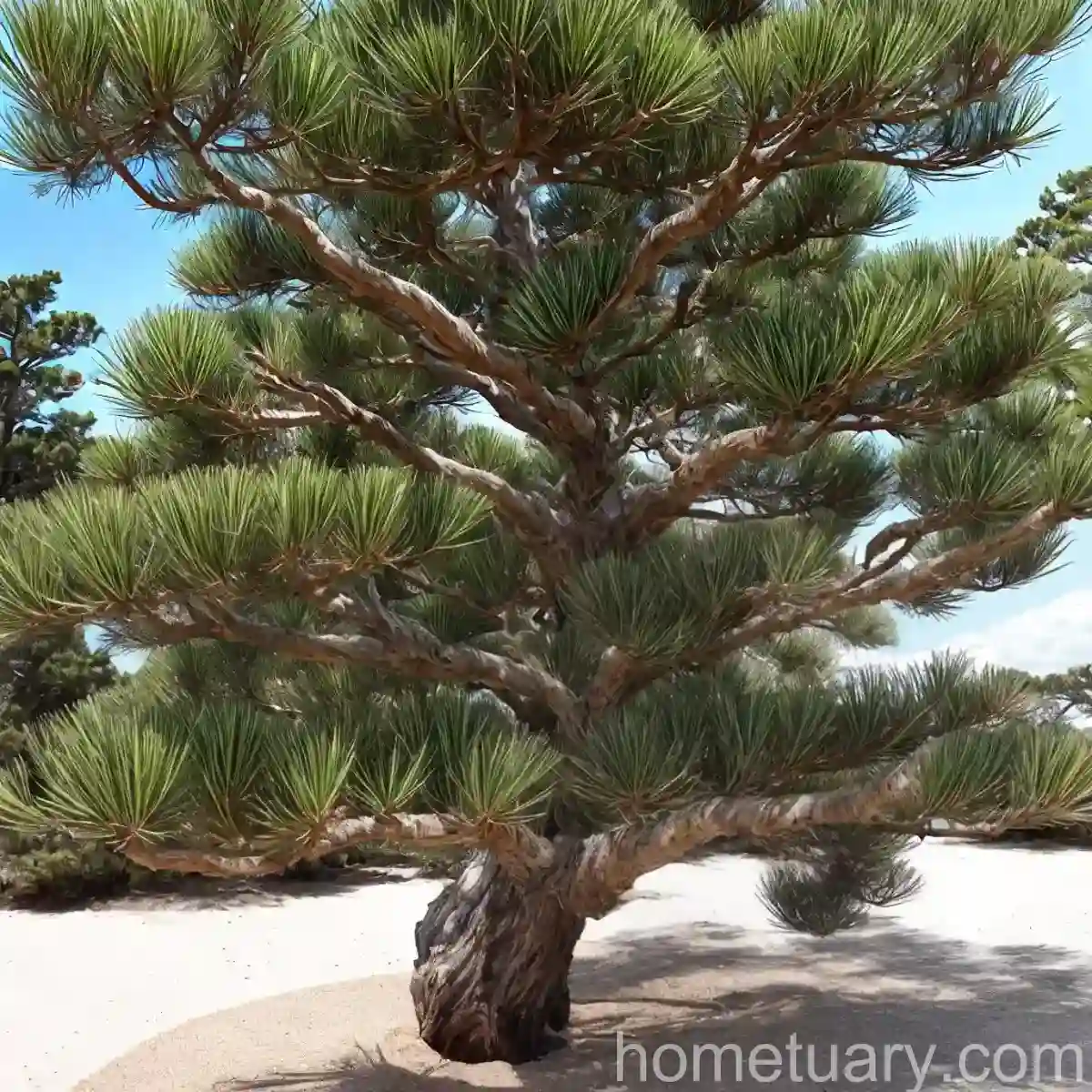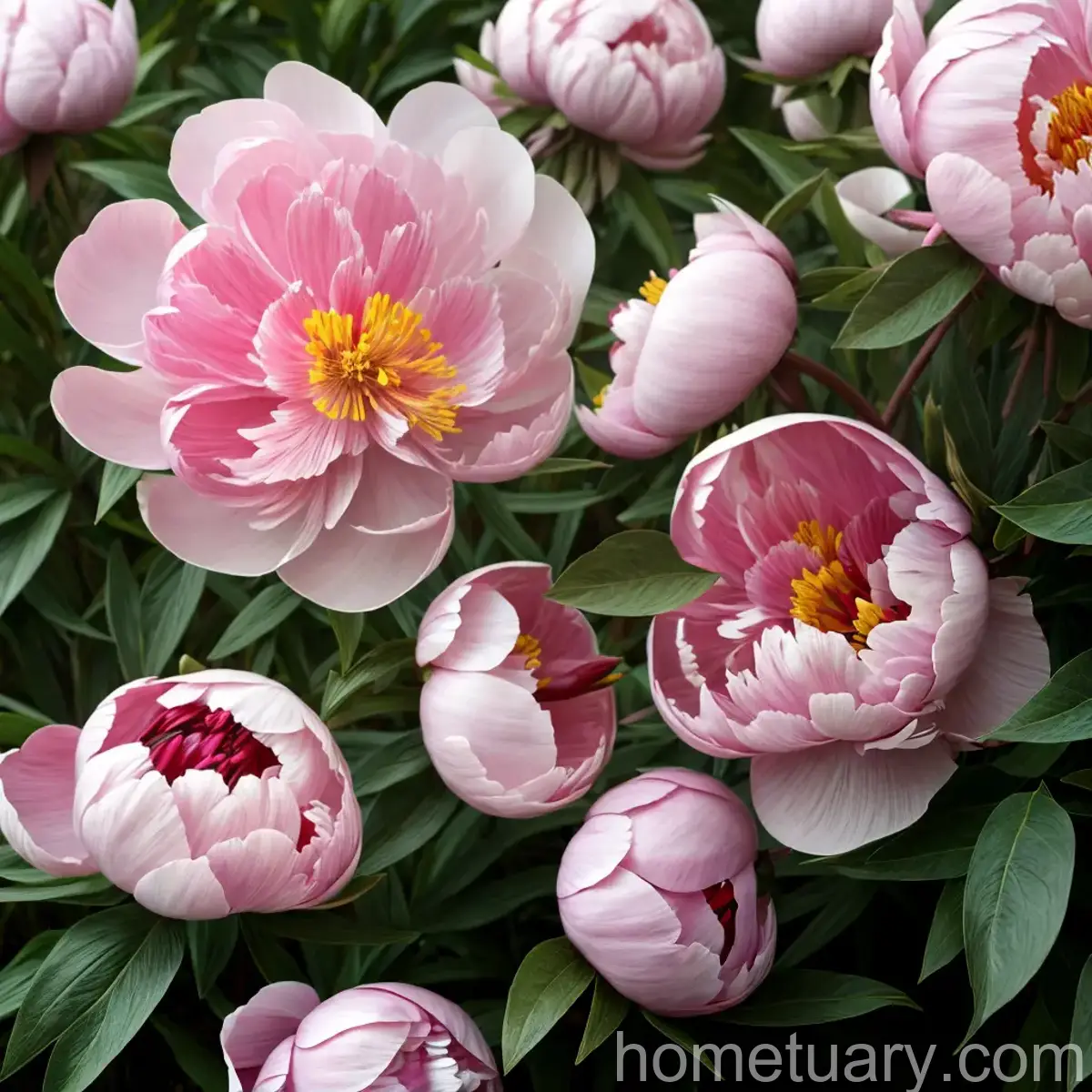Lily Turf (Liriope muscari ‘Big Blue’): A Comprehensive Guide
Liriope muscari, also known as Lily Turf, is a charming and versatile perennial plant that is popular for its low-maintenance nature and adaptability to various growing conditions. Among its numerous varieties, the ‘Big Blue’ cultivar stands out for its striking blue-purple flowers and lush, grass-like foliage. In this comprehensive guide, we will delve into the cultural significance, optimal care requirements, and the many uses of Lily Turf in landscaping and gardening.
What is Lily Turf (Liriope muscari ‘Big Blue’)?
Lily Turf, scientifically known as Liriope muscari, is a resilient and visually appealing evergreen perennial that belongs to the family Asparagaceae. It is native to East Asia, including China and Japan, and has gradually gained popularity in gardens and landscapes around the world due to its adaptability and aesthetic appeal.
The ‘Big Blue’ cultivar is especially prized for its vibrant, violet-blue flower spikes that emerge from the dense tufts of arching, strappy leaves, providing a beautiful contrast to its surrounding greenery. As a groundcover or border plant, Liriope muscari ‘Big Blue’ adds a touch of elegance and tranquility to any outdoor space.
Key Takeaways – Lily Turf (Liriope muscari ‘Big Blue’)
Before delving into the specifics of Lily Turf cultivation and maintenance, let’s highlight the key takeaways regarding this exceptional plant:
- Lily Turf Plant:
- Scientific Name: Liriope muscari ‘Big Blue’
- Common Name: Lily Turf
-
Classification: Perennial, Evergreen
-
Cultural Significance:
- Versatile groundcover and border plant
- Aesthetic appeal due to striking blue-purple flowers
-
Low-maintenance and adaptable to various growing conditions
-
Uses:
- Groundcover for shaded areas
- Border plant for pathways and flower beds
- Erosion control on slopes
- Versatile container plant
Now, let’s explore the various aspects of Lily Turf care, including its water, sunlight, soil, fertilizer, and pruning requirements.
Culture
Water
Liriope muscari ‘Big Blue’ thrives best in evenly moist soil, particularly during its initial establishment period. Once the plant is well-rooted, it exhibits remarkable drought tolerance and can withstand short periods of dryness. However, to ensure optimal growth and flowering, it is essential to maintain moderately moist soil conditions, especially during prolonged dry spells or in warmer climates.
Lily Turf Watering Tips:
- Frequency: Water regularly, especially during prolonged dry spells
- Soil Moisture: Maintain moderately moist soil conditions
- Established Plants: Exhibits drought tolerance once established
Sunlight
One of the most remarkable attributes of Lily Turf is its ability to thrive in various light conditions, making it an excellent choice for both sunny and shaded areas. While it prefers partial shade to full shade, it can also tolerate moderate sunlight, especially in cooler climates. However, in regions with intense heat, providing ample shade and protection from direct afternoon sun is beneficial for the plant’s overall health and vigor.
Lily Turf Sunlight Requirements:
- Optimal Conditions: Partial shade to full shade
- Tolerance: Can tolerate moderate sunlight in cooler climates
- Protection: Provide shade in regions with intense heat
Fertilizer
Lily Turf generally grows well in organically rich, well-draining soil without requiring heavy feeding. However, fertilizing the plant in spring with a balanced, slow-release fertilizer can promote healthy growth and enhance its flowering potential. It is advisable to avoid excessive fertilization as it may lead to lush foliage at the expense of floral abundance.
Lily Turf Fertilization Guidelines:
- Timing: Apply a balanced, slow-release fertilizer in spring
- Frequency: Avoid excessive fertilization
- Benefits: Promotes healthy growth and flowering potential
Soil
Liriope muscari ‘Big Blue’ thrives in well-draining, humus-rich soil with a slightly acidic to neutral pH. While it can adapt to a wide range of soil types, including clay and sandy soils, ensuring good drainage is crucial to prevent waterlogging, especially in heavy clay soils. Amending the soil with organic matter, such as compost or well-rotted manure, can further improve its texture and fertility.
Lily Turf Soil Requirements:
- Drainage: Well-draining soil
- pH Level: Slightly acidic to neutral
- Adaptability: Can grow in various soil types with proper drainage
Pruning
Pruning Lily Turf primarily involves the removal of old or damaged foliage and spent flower spikes to maintain its neat appearance and encourage new growth. Regular pruning, especially in early spring before the new growth emerges, helps rejuvenate the plant and prevents the accumulation of unsightly debris. Additionally, dividing the plant every few years can help manage its size and rejuvenate its vigor.
Lily Turf Pruning Recommendations:
- Timing: Prune in early spring before new growth emerges
- Purpose: Maintain tidy appearance and encourage new growth
- Division: Divide the plant every few years to manage size and rejuvenate vigor
Propagation
Liriope muscari ‘Big Blue’ can be easily propagated through division, making it a cost-effective and straightforward means of obtaining new plants. The ideal time for division is in early spring, just before the onset of new growth. By carefully dividing the clumps of mature plants into smaller sections and replanting them in suitable locations, you can expand your Lily Turf collection and fill in any bare areas in the garden.
Lily Turf Propagation Method:
- Technique: Propagate through division of mature clumps
- Timing: Divide plants in early spring before new growth emerges
- Benefits: Cost-effective and simple means of obtaining new plants
Container Popularity
In addition to being an excellent groundcover and border plant, Liriope muscari ‘Big Blue’ is also well-suited for container cultivation, adding a touch of elegance to patios, balconies, and outdoor living spaces. Its adaptability to various light conditions makes it a versatile choice for container gardening, allowing it to thrive in shaded urban gardens as well as sun-drenched terraces.
Lily Turf Container Gardening Advantages:
- Versatility: Thrives in containers in both shaded and sunlit areas
- Aesthetic Appeal: Adds elegance to patios, balconies, and outdoor living spaces
- Adaptability: Well-suited for urban gardens with limited space
Now that we have covered the fundamental aspects of Lily Turf culture and maintenance, let’s delve into its various uses in landscaping and gardening, as well as tips for disease and pest management.
Common Diseases
Liriope muscari ‘Big Blue’ is generally resilient to most common plant diseases, owing to its robust nature and adaptability. However, it is important to be vigilant and monitor the plant for any signs of stress or disease, especially during periods of high humidity and prolonged moisture. In particular, issues such as root rot and foliar diseases can occur if the plant is subjected to excessively wet or poorly drained soil.
Lily Turf Common Disease Concerns:
- Root Rot: Caused by excessively wet or poorly drained soil
- Foliar Diseases: Monitor for signs of leaf spot or fungal infections
- Vigilance: Be vigilant during periods of high humidity and prolonged moisture
Disease Diagnosis
Diagnosing diseases in Lily Turf involves careful observation of the plant’s overall condition, including the appearance of its foliage, stems, and root system. When encountering potential disease issues, it is advisable to consult with a plant health specialist or extension service to accurately identify the specific ailment and determine the most effective course of action for remediation.
Effective Disease Diagnosis:
- Observation: Careful examination of foliage, stems, and roots
- Professional Consultation: Seek advice from plant health specialists if needed
- Remediation: Determine effective strategies for addressing specific diseases
Common Pests
Lily Turf is relatively resistant to pest infestations, yet it may occasionally attract certain pests, including snails, slugs, and spider mites, especially in conditions of high humidity and dense foliage. Vigilance and prompt intervention, such as handpicking pests or utilizing eco-friendly pest control methods, can effectively manage pest populations and safeguard the plant’s health.
Lily Turf Pest Management:
- Pest Vigilance: Monitor for snails, slugs, and spider mites
- Prompt Intervention: Handpick pests or use eco-friendly pest control methods
- Preventative Measures: Maintain good air circulation and reduce excess moisture to deter pests
Botanist’s Tips
Maximizing Visual Impact
To maximize the visual impact of Liriope muscari ‘Big Blue’ in landscape design, consider planting it in mass groupings or drifts, creating a stunning sea of violet-blue flowers amidst its lush foliage. By strategically placing it as a border plant or groundcover along pathways, the plant can impart a sense of tranquility and cohesion to the overall garden layout.
Companion Planting
Introducing complementary companion plants with contrasting textures and forms, such as ferns, hostas, or other shade-loving perennials, can accentuate the aesthetic appeal of Lily Turf. The interplay of different foliage shapes and colors enhances the visual interest and creates a harmonious composition within the garden or landscape.
Seasonal Care Considerations
During the colder months, provide a layer of mulch around the base of the plants to protect the root system from frost and temperature fluctuations. Additionally, in regions with severe winter conditions, it is advisable to provide winter protection, such as burlap wraps, to shield the plant from harsh winds and frost exposure.
Fun Facts
- In traditional Chinese medicine, certain species of Liriope have been used for their medicinal properties, including their potential as an anti-inflammatory and antipyretic agent.
- Liriope muscari ‘Big Blue’ is a popular choice for urban gardens due to its ability to thrive in shaded areas and its versatility as a container plant.
- Lily Turf is known for its role in erosion control, making it a valuable addition to landscapes with sloping terrain or soil stability concerns.
Links to External Resources
For further exploration of Lily Turf (Liriope muscari ‘Big Blue’) and its diverse applications in gardening and landscaping, the following resources provide valuable insights and guidance:
- Lilyturf: A Guide to Growing Liriope
- Liriope Muscari (Lily Turf)
- Liriope muscari ‘Big Blue’
- Lily Turf: An Ideal Plant for Urban Gardens
- Liriope Muscari ‘Big Blue’: A Versatile Ground Cover
Conclusion
In conclusion, the Lily Turf (Liriope muscari ‘Big Blue’) stands as a testament to nature’s elegance and resilience, offering a myriad of benefits for both amateur gardeners and landscaping professionals alike. Its adaptability to various light and soil conditions, coupled with its low-maintenance nature, make it a versatile and valued addition to gardens, landscapes, and urban green spaces.
By embracing the comprehensive insights provided in this guide, enthusiasts of botany and horticulture can unlock the full potential of Lily Turf, harnessing its charm and functionality in their outdoor havens. Whether adorning shaded corners, serving as an erosion control solution, or lending visual interest to mixed planters, Liriope muscari ‘Big Blue’ continues to captivate the hearts and minds of plant enthusiasts worldwide.
Now, armed with the knowledge and appreciation of the Lily Turf’s intricate nature, let us embark on a journey to cultivate, celebrate, and cherish this remarkable perennial, ensuring its enduring presence in our gardens and landscapes for generations to come.

